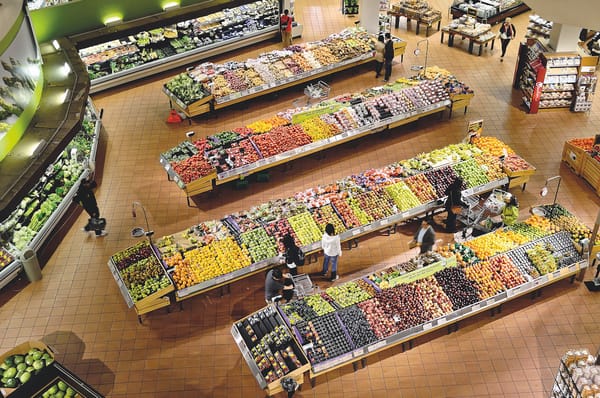The dawning of the age of synthetic biology
Synthetic biology is one of the latest buzzwords in the STEM community, but what is it actually all about?

Would you like to have a vegan hamburger? Are you concerned with the deteriorating environment? Are you a biology geek eager to explain why biology is cool? The answer to such wide-ranging questions is synthetic biology.
What is synthetic biology? Formally, it is the interdisciplinary science of integrating engineering principles to biology to actively reimagine, reshape, and re-engineer living organisms and develop artificial biological systems.
In more simple words, it is changing perspectives about harnessing the potential of biology for practical use, borrowing from the field of engineering to bring more rigor, standards, and benchmarks in communication to the fundamental principles of biology.
Philosophy of science, more than anything else, is driving the field of synthetic biology. It aims to correct longstanding deficits obstructing the progress of biology, namely that it is ‘hard to replicate’ and ‘hard to predict’. The idea is to bridge this fundamental limitation in biology by complementing it with tools and principles of engineering which have developed over a few centuries to be able accurately predict and replicate results.
There are a number of enabling technologies which have made synthetic biology possible as well as different from its predecessors. These technologies include automated DNA sequencing, rapid DNA synthesis, efficient DNA assembly, stochastic modeling of biological processes, and rigorous statistical inference.
Some ardent critics of synthetic biology complain the enabling technologies of synthetic biology have been around for many years, and the new field is no more than a rebranded form of genetic engineering which provides no additional utility beyond marketing to investors and funding agencies. To their credit, they are partially right. All objects in the toolkit of synthetic biology have been employed by its predecessors, but only partially. What makes this new prodigal child of biotechnology different is that it provides a unique interface, encompassing all the enabling technologies together to focus on a coherent purpose.
“Synthetic biology aims to complement biology with tools and principles of engineering”
Synthetic biology has done more than just allow for scientific progress: it has succeeded in bringing together people from diverse backgrounds like biologists, engineers, mathematicians, computer scientists, policymakers, environmental activists, entrepreneurs, and investors. This has brought a cascading effect resulting into democratizing of biotechnology. Many ‘Do it Yourself Biology’ labs have started to crop up across the world, including London, where science enthusiasts are developing ‘radioshack-like laboratories’ taking on open problems. DIY biology enthusiasts have a more sophisticated term for it: ‘Bio-Hackerspace’. The name is inspired by a hacking culture which began in silicon valley in the early 1980s where the enthusiasts would tinker with technology just to push its limits.
The growing hacker movement has raised concerns among public and policymakers alike. Given even field-tested GMOs are viewed with suspicion, the idea of an amateur trying to modify bacteria to make it glow in dark instead of a flashlight is unpalatable to many. These concerns have been acknowledged by many experts in the first ‘Synthetic Biology 1.0’ conference held at MIT, which discussed the risk, ethics, and intellectual property issues associated with this new paradigm of biological engineering. However, this conference coincided with another event at MIT which has become the world’s largest movement spearheading synthetic biology: International Genetic Engineering Machines competition or iGEM.
iGEM is hosted every year at MIT where teams across the world participate and present their project, built around synthetic biology to tackle any open problem in biology. iGEM is immensely popular, with the number of participating teams increasing every year. The first iteration of iGEM in 2004 saw only five teams, but as of 2017 more than 300 teams participated in this global competition.
Perhaps the biggest driver of iGEM’s popularity is its emphasis on science communication: teams have to build an extensive wiki to present their work with proper documentation of project idea, workflow, results, and a lab notebook for all future teams to take guidance from. Moreover, every team has to do public outreach, which involves organizing workshops and media outreach, conducting surveys, and promoting themselves on social media. The track record of Imperial College has been very impressive in iGEM; the team won the grand prize in 2016 and came overall second in 2014, 2011 and 2006. In a disruptive field with no formal curriculum iGEM has been a successful endeavor in providing young students with a holistic education about synthetic biology.
The UK has been very proactive about being an integral participant in the emerging global synthetic biology scene, where the US has been the predominant player. In 2012, the UK Research Council unveiled a roadmap for future with the ambition of making the UK a leader in synthetic biology. Its key recommendation included investing in a network of multidisciplinary centers for synthetic biology and fostering a skilled and well-funded UK-wide synthetic biology community.
These recommendations led to forming of a multi-university initiative bringing together top five UK universities in synthetic biology – Imperial, Cambridge, Edinburgh, King’s, and Newcastle – to “provide critical mass and bring synergy” in synthetic biology development. While King’s focuses on the social and ethical implications of synthetic biology, the other four specialise in advanced research. Synthetic biology is not just an evolution of a new area of research but also a societal and technological movement strong enough to revolutionize how we as humans interact with each other and our environment. There is hope as well as concern over the change that might come, but all we can do is prepare for the changes.
The dawn of synthetic biology is here.








